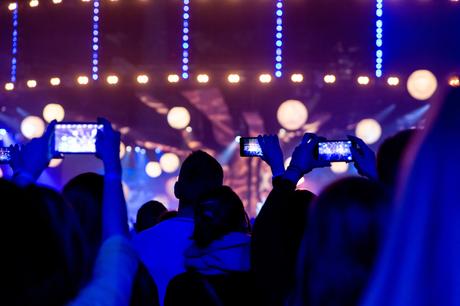
Fast-forwarding through TV commercials, using ad blockers on mobile and desktop, skipping ads entirely with streaming services subscriptions...these are the behaviors of today's consumers, who don't want to be bothered with pushy ads or salesmen. They value materialism less and personalization more.
So how do you catch their attention? Experiential marketing.
According to an EventTrack survey, 65% of people believe that live events and product demonstrations help them fully understand a product better than ads or other methods could.
Experiential marketing, often used interchangeably with "event" marketing, uses branded experiences to engage consumers in a personal way. These campaigns center on live, memorable and immersive interactions designed to leave lasting impressions on the customer. The customer then shares with others, creating not only direct, lasting connections for them but also a positive association with your brand.
Why experiential marketing is worth your time
Regressive though it may seem in the digital age of consumerism, person-to-person interaction between business and customer is in higher demand now than ever before. With technology serving as the primary medium for daily social activity, people place a higher value on face-to-face experiences. An Eventbrite study found that 78% of millennials would choose to spend money on a desirable experience or event instead of a desirable object. Not only this, but American consumer spending on live events doubled from 1990 to 2010.
Technology is an essential component to this type of marketing, though. Effective experiential campaigns harness technology by crafting brand engagements in tangible, offline ways that, in turn, fuel online conversations. Actionable insights can be gleaned from the resulting boost in online presence, brand loyalty and relationships with customers.
And industry leaders are taking notice. According to a Freeman Global Brand Experience study, one in three CMOs plan to dedicate 21 to 50% of their budgets to experiential marketing over the next several years. From more informed messaging changes to increased consumer engagement, your ROI will be hard to miss.
Types of experiences
Experiential campaigns come in many forms, so it's helpful to know your options. Your interaction doesn't even have to be an event, but it does need to create personal engagement with your brand.
This experience comes in the form of content creation designed for a small group of people to be shared to the masses through social distribution or advertising. These interactions are often easier to execute because you are planning for less people on a smaller scale, but the potential rewards are still significant.
This type of interaction isn't simply throwing a party. It's a live event that connects your brand directly to customers with the goal of increased conversation and product trial. You should encourage social sharing at your event to boost those conversations. At branded events, 49% of consumers reportedly record mobile video and 39% of them share those videos on Twitter.
In this experience, such as sponsoring an event, you have less direct engagement with customers but increased brand awareness by association. This type of interaction can be particularly effective with pre-scheduled events that are highly popular among your audience or hosted by business partners.
Regardless of your resources, one of these experience types should align with your goals. The opportunity to craft exciting experiences for people to learn about your brand - and promote it - is within your grasp.
How to create a smash experience
Designing an original, engaging experience is simpler than you might think. You are essentially inviting your audience to engage with your business in a tangible situation, to shift from passive viewer to active participant. Hands-on, interactive branding material is useful, but remember that an experience can be your chance to show consumers what you stand for, not just what you offer.
Consider the following questions:
- How does my brand help customers' problems/desires?
- What kinds of things bring my customers enjoyment?
- Where does my audience like to visit/socialize?
- How can my product benefit potential customers in ways they didn't realize?
- What message do I really want my brand to send right now?
Take your answers to those questions, and build an experience around them. Jump outside the digital box and get creative! Make it fun, but keep it relevant and on-brand. Require an exchange of personal information as the cost of admission. Consider partnering with other brands, regional artists and noteworthy musicians. Keeping efforts local will encourage people to share with friends and family. Adding elements of competition and play can also give your audience a sense of achievement. Check out these examples for inspiration.
Even B2B companies can create interactions that give audiences the chance at first-hand experiences with their services/products. It's less about the type of event you choose and more about the interactions between consumers and your brand.
Tracking success
A branded hashtag for social media sharing is a must, as well as an online way for people to participate who discover your experience through the hashtag. Consider live-streaming as well to capture the action and generate more attention.
Measure your campaign's success through data collection. You can use engagement metrics to determine how many social expressions and viral impressions were earned. Surveys of participants are also excellent for tracking sentiment and product engagement.
Marketing magic can happen when you couple real-life experiences with social amplification across channels. By carefully curating authentic interactions, you can reach your target audience in a meaningful, memorable way. Few other strategies offer the chance to humanize your brand and elevate connections with customers while balancing local and global.
Eventually, experiential marketing will find its way into nearly every industry. #beamongthefirst
